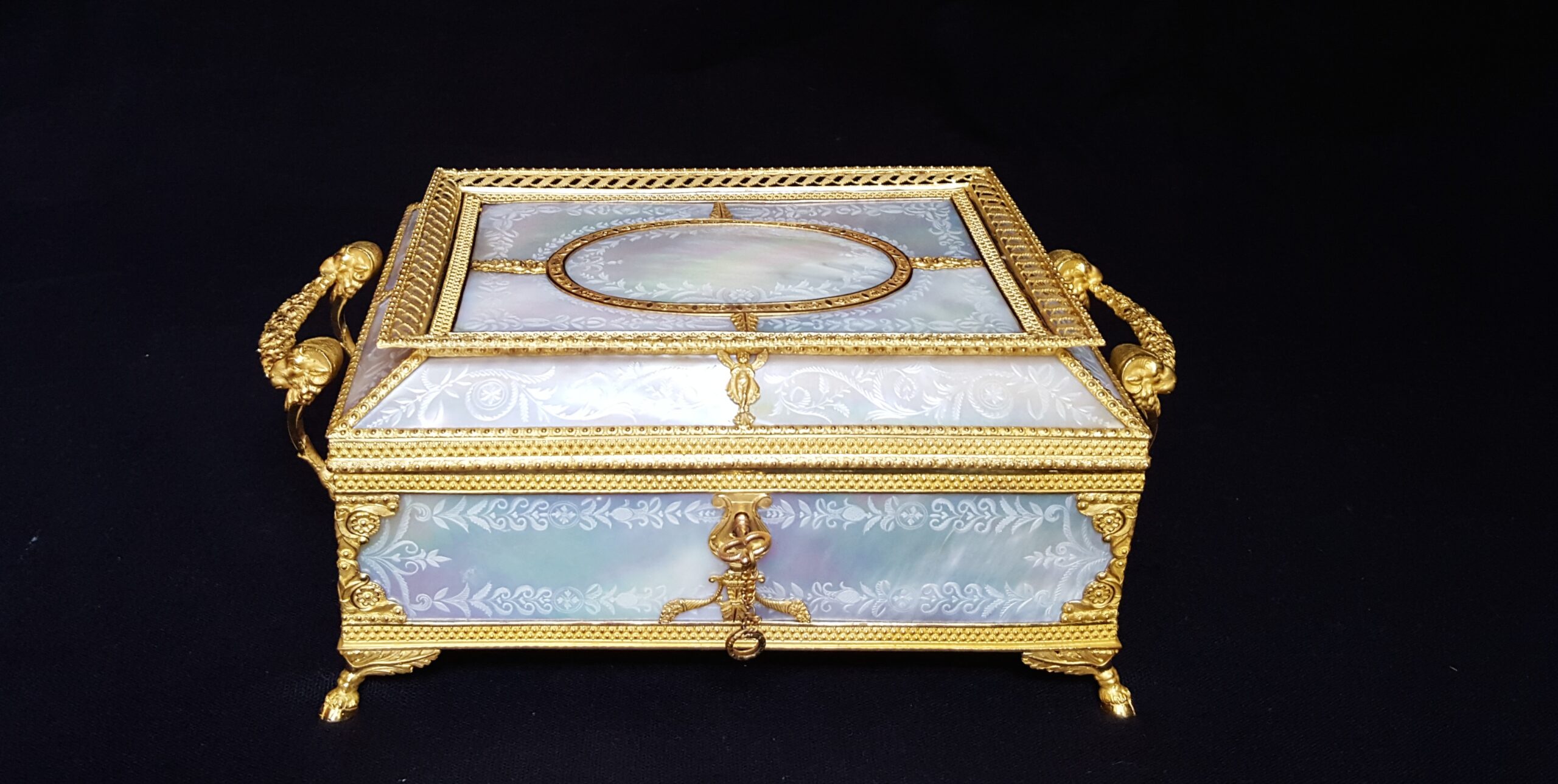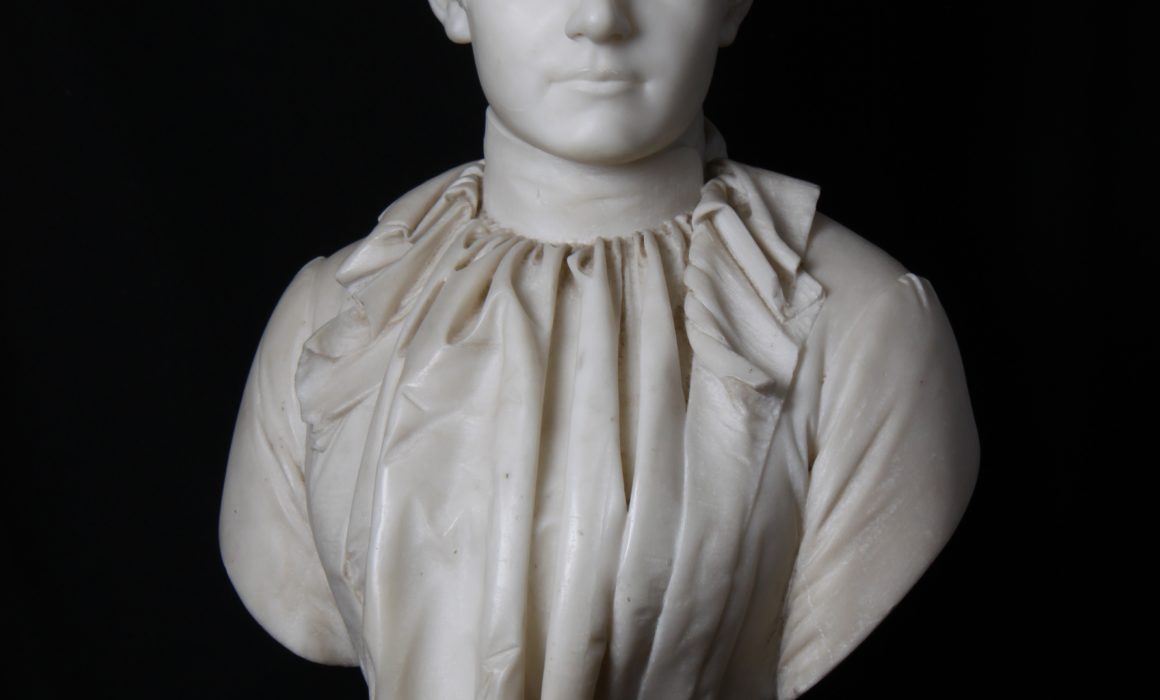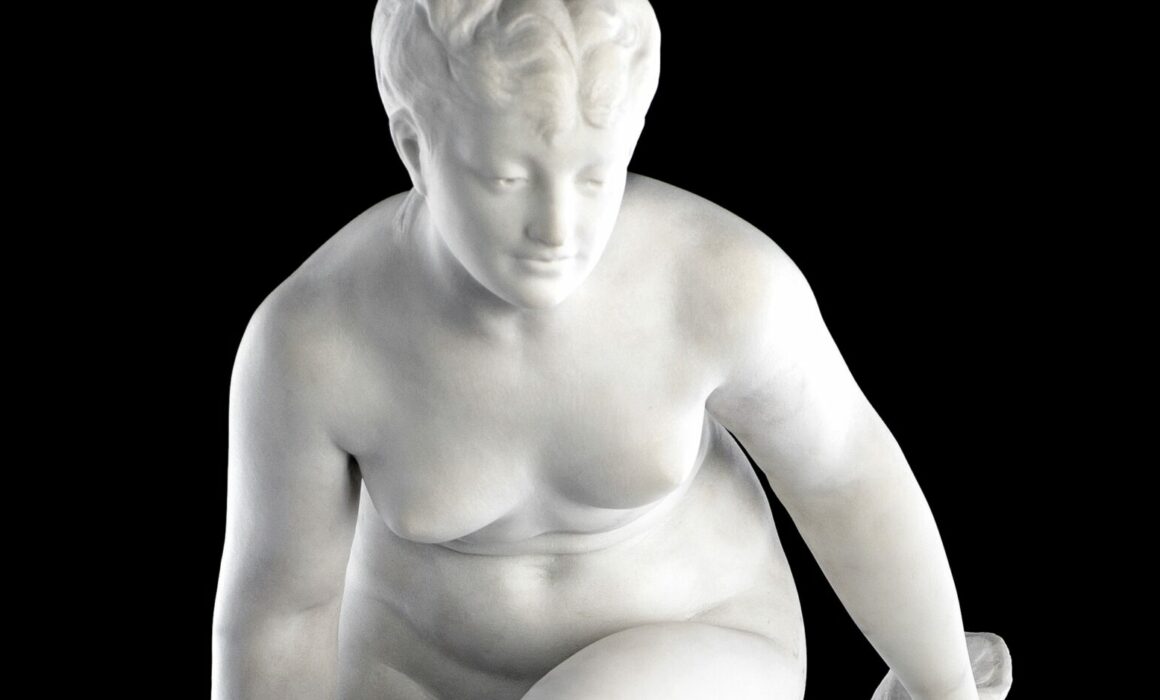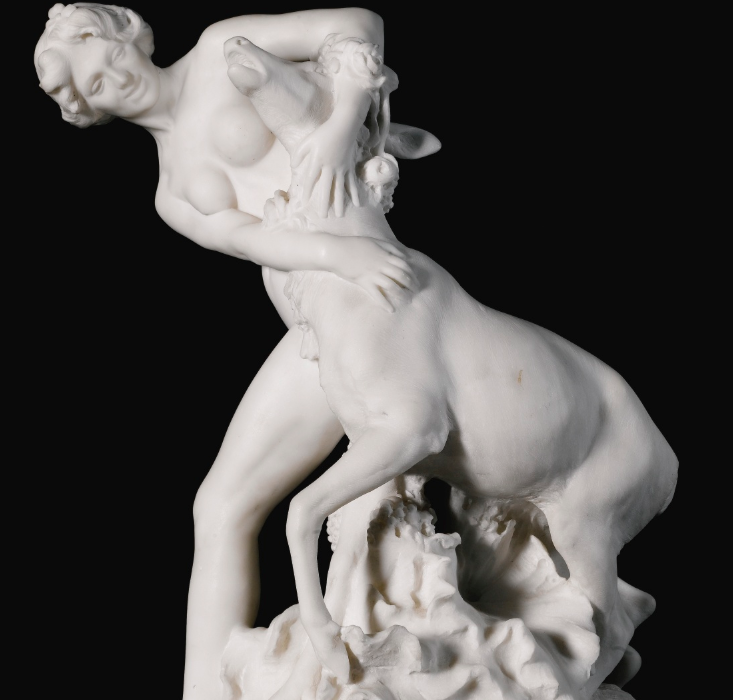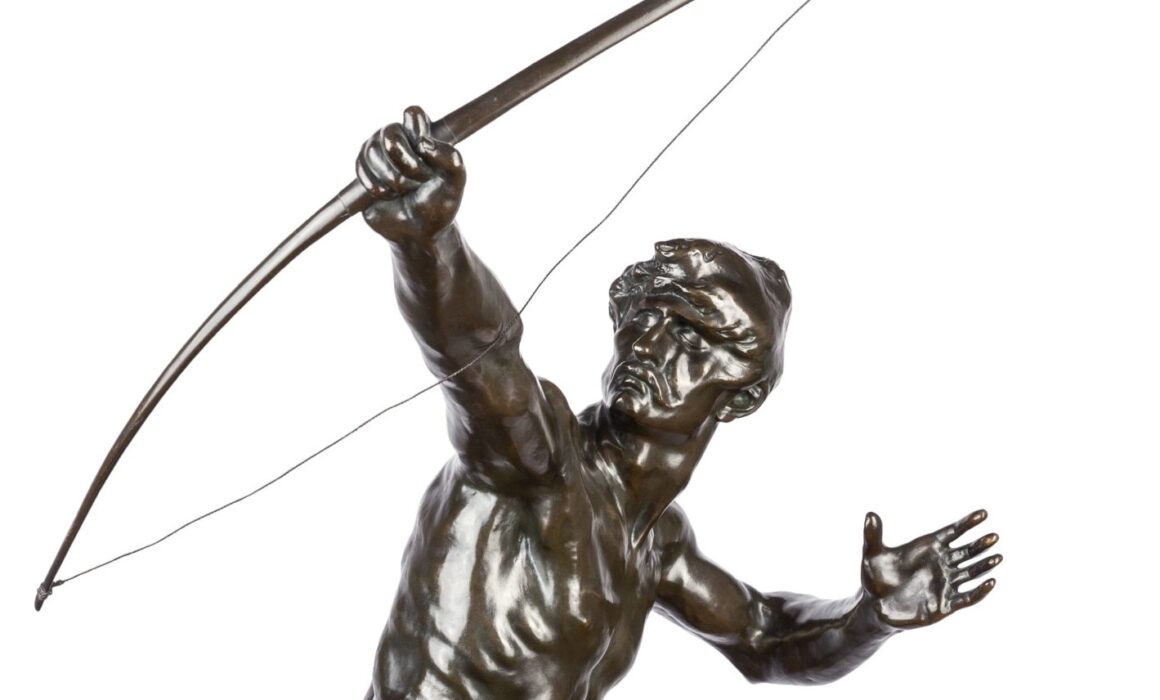SALOMON PLAIRA’S 17TH CENTURY POCKET WATCH
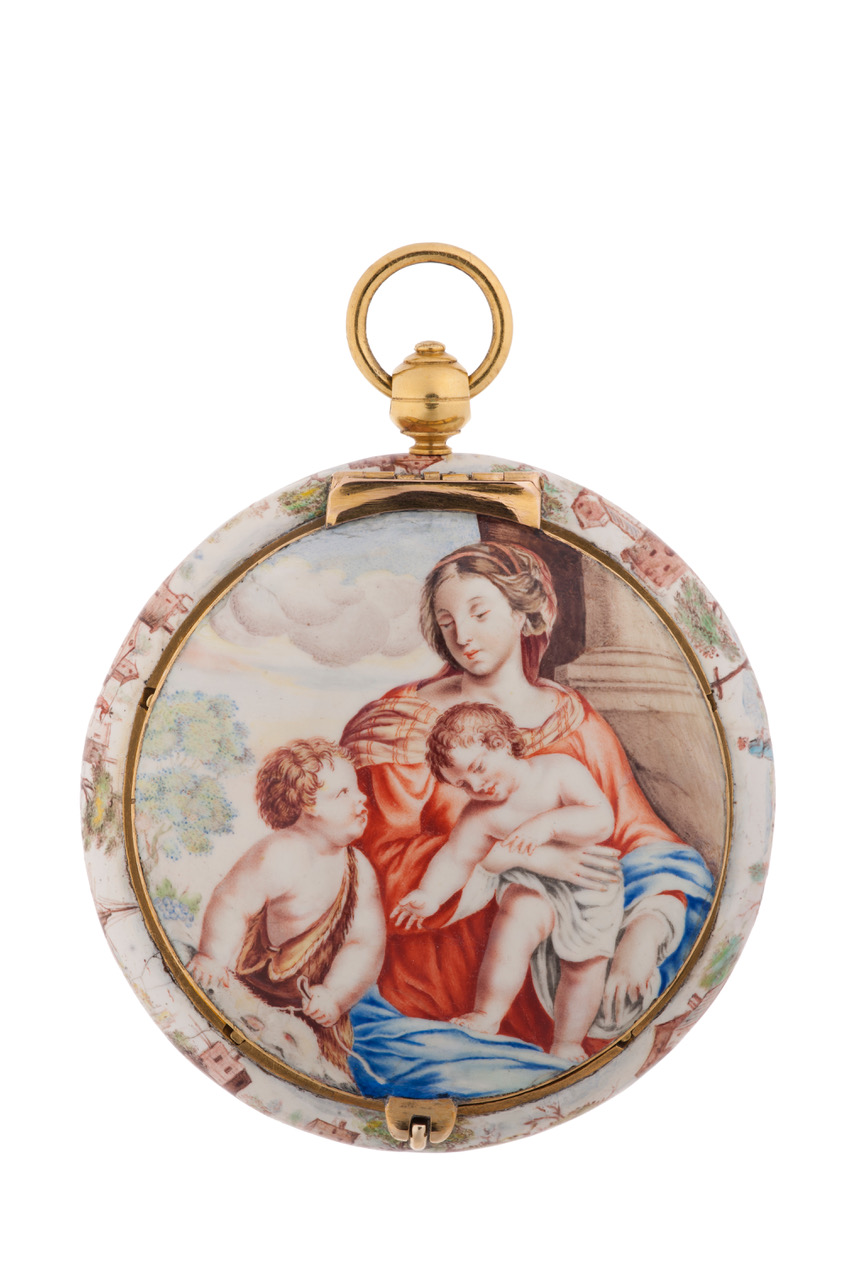

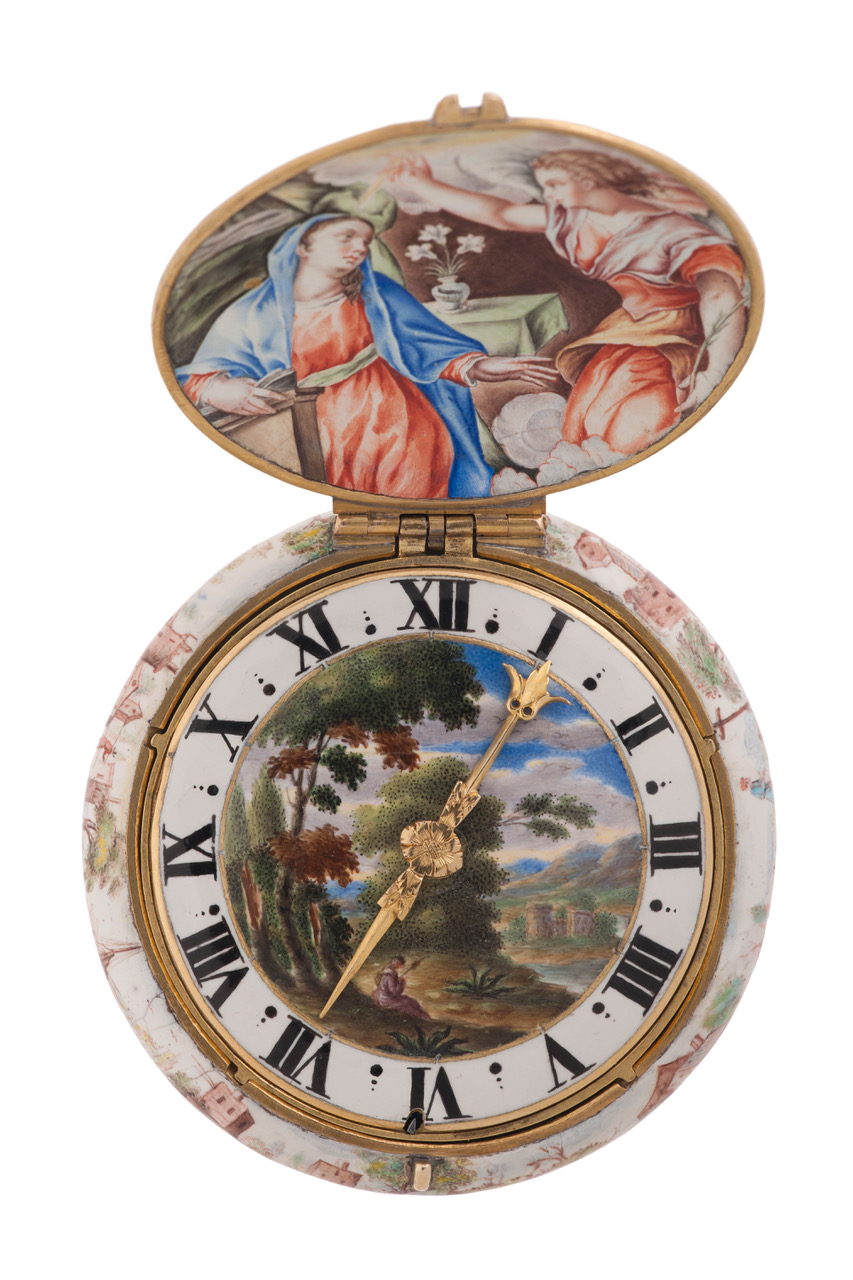



SALOMON PLAIRA’S 17TH CENTURY POCKET WATCH
An important and large 20K gold and enamelled pendant watch, signed Salomon Plairas.
Description
An important and large 20K gold and enamelled pendant watch, signed Salomon Plairas.
Period
-
- Blois, France, circa 1630-1635.
Provenance
-
- The Time Museum, Rockford, Illinois, U.S.A.
Dimensions
-
- Diameter : 59 mm.
Marble bust signed “Pari y Bordonetti”
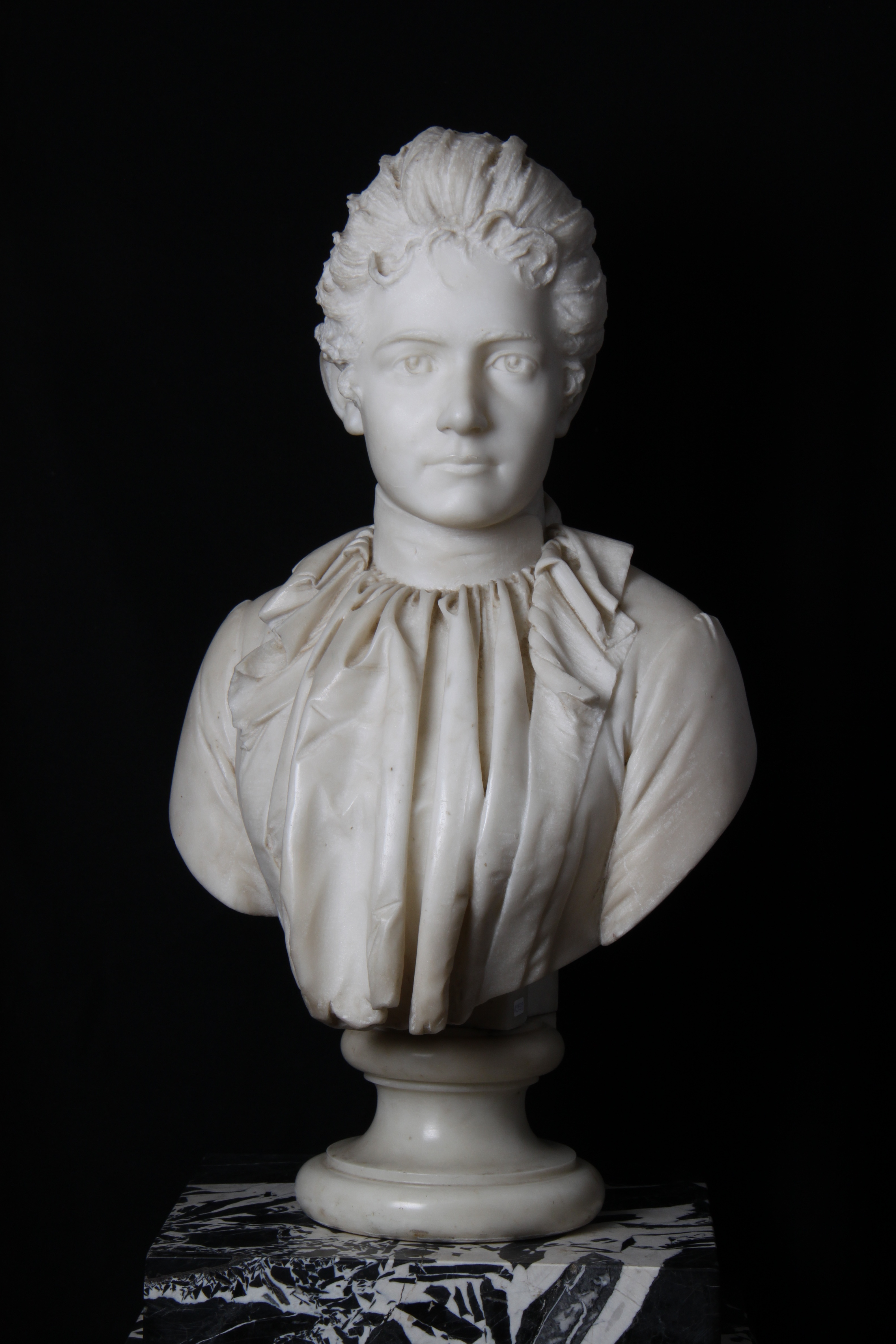

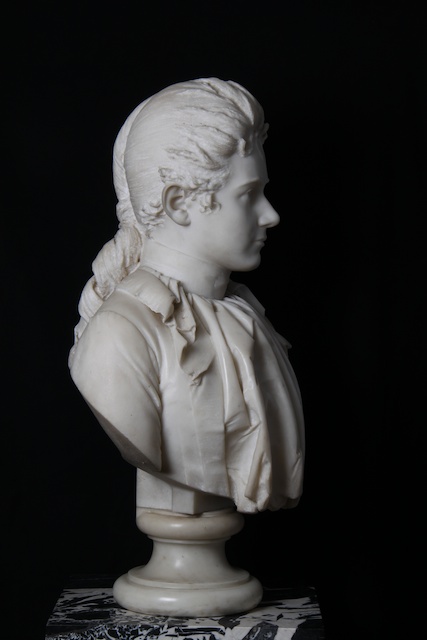


Marble bust signed “Pari y Bordonetti”
Bust of a young nobleman, a fine high-quality marble sculpture from the 19th century.
Bust of a young nobleman, a fine high-quality sculpture from the 19th century.
Height: 70 cm.
Width: 39 cm.
Depth: 34 cm.
Ondine by Albert Desenfans
Ondine by Albert Desenfans
Marble sculpture depicting the water nymph Ondine who became human, and therefore mortal.
This sculpture dates from the end of the 19th century, circa 1890, and represents the nymph or naiad Ondine. Unlike mermaids, nymphs do not live in the sea; they frequent the running waters of rivers, waterfalls and fountains. On bright summer days, they like to sit on the edge of fountains and comb their long hair with golden or ivory combs. Those with golden hair are said to possess great treasures which are kept in beautiful submerged palaces.
It is said that the fountains are fed by the tears of the undines, which dry up as soon as a fairy feels offended. Thus, it is customary to leave various offerings near the fountains to appease the water fairies, such as flower garlands, pins or bottle shards, which glitter and shimmer in the water.
An identical and equally exquisite nymph sculpture also exists in bronze, exhibiting Desenfans’ phenomenal anatomical skill. The figure of Ondine is extraordinarily true to life, while at the same time displaying an originality of imagination in marble. The suppleness of her body as she leans towards the trusted element of water, the serenity of her facial expression and the manner in which the hands, the knee and feet coordinate, lend this sculpture a particular grace.
The Belgian sculptor Albert Desenfans (1845 – 1938) studied at the Brussels Academy with professor Louis Jéhotte and Eugène Simonis where he received the training that would enable him to build a brilliant career. Desenfans was an independent sculptor who regularly showed his work at countless Belgian and international Salons. He is mostly known for his religious, allegorical and mythological works. Desenfans produced large sculptures on commission for public buildings such as the City Hall, the King’s House, the Palace of Justice in Brussels and the House of the Province of Liège.
Desenfans’ smaller sculptures, executed in a variety of materials (stone, marble, plaster and ivory), demonstrate his expertise, stylistic feeling and respect for realism. This skill led to a remarkable degree of verisimilitude, the foremost trademark of his art. Desenfans’ fame is best demonstrated by his bronze statue of the stately General Chazal with a watchful lion at his feet.
Height : 77,5 cm.
Width: 41 cm.
Depth: 32 cm.
Lion by Prosper Lecourtier

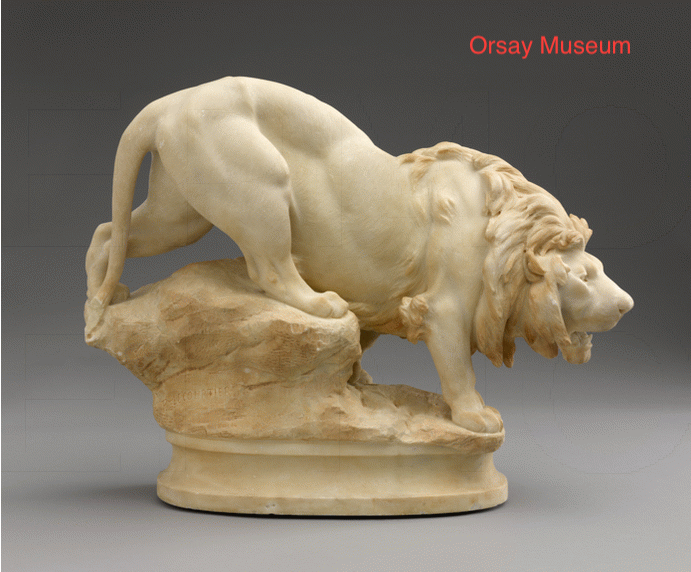
Lion by Prosper Lecourtier
Signed «P. LECOURTIER», this marble sculpture represents a lion crouching on a rock.
Signed «P. LECOURTIER», this sculpture represents a lion crouching on a rock. It embodies the restrained power and tension of the beast. Rendered in white marble, the muscular lion is poised on a deliberately unpolished rock. This rock is made of a red, veined marble finishing in a contrasting polished base.
The French sculptor Prosper Lecourtier (1851 – 1924) was born in Grémilly and died in Paris. Lecourtier learnt his craft in Paris under the direction of Frémiet and Coutant. Although little is known about his life, he was a prolific artist. He regularly exhibited at the Salon from 1875 onwards. Remembered as a great animal sculptor, his works include: « Cheval arabe » (1879), « Chien et ses petits », « Chien bull-terrier » (1882), « Chienne » (1883), « Marchand de volaille » (1884), « Chien d’arrêt » (1886), « Chiens bassets » (1889), « Cheval de trait » (1901), « Lionne » (1907), and « Lionne au repos » (1911).
Marble sculptures by this artist are extremely rare as most of his work was in bronze. However, the same model entirely in white marble is on display at the Musée d’Orsay in Paris and another in bronze at the Guéret Museum of Art and Archaeology.
Height: 54 cm.
Length: 54,5 cm.
Width: 18 cm.
Madame de Pompadour by Carlo Nicoli



Madame de Pompadour by Carlo Nicoli
A marble bust representing Madame de Pompadour, official chief mistress of Louis XV from 1745 to 1751.
Born in Carrara, Nicoli went on to carve out an international career for himself, creating sculptures for as far afield as Britain, Australia, South Africa, Mexico and Argentina. For his Watchful Angel or Innocence of 1870 Nicoli received a medal from King Alfonso XIII of Spain. A major work by Nicoli in the United Kingdom is his marble statue of Queen Victoria in Brighton, executed in 1897. Nicoli was clearly a popular sculptor among royal sitters; a bust of Princess Elena of Montenegro has been recorded in the collection of the Quirinale in Rome. Carlo Nicoli’s studio survives to this day in Carrara and has UNESCO recognition.
L’Aurore by Alfred Finot


The white marble sculpture « L’Aurore » by the French sculptor Alfred Finot rests on a veined marble base signed «A. Finot». The anatomical elements of Alfred Finot’s demi-nude of a young woman getting up in the morning, her limbs, upper body, and her gently smiling face, have been rendered in fine detail, leaving the draperies enveloping her body and head undefined.
« L’Aurore » is reminiscent of Barrias’ famous figure « Nature Unveiling Herself to Science ». The style however, is closer to Art Nouveau as the soft curves of form and drapery seem to melt into one another in subtle undulations.
Alfred Finot (1876 – 1947) was born in Nancy, France. Between 1889 and 1894, he studied art at the Nancy School of Fine Arts. He was trained in sculpture by Ernest Bussière. In 1895, he entered the studio of the sculptor Louis-Ernest Barrias at the School of Fine Arts in Paris. He exhibited at the Salon des Artistes Français in 1897. Then , in 1904 he presented « La Jeunesse passe » (The Passing of Youth) at the Exhibition of Decorative Arts in Nancy.
Height: 102 cm.
Width: 42,5 cm.
Depth: 31,5 cm.
Nymph of Diana by Jules-Louis Rispal
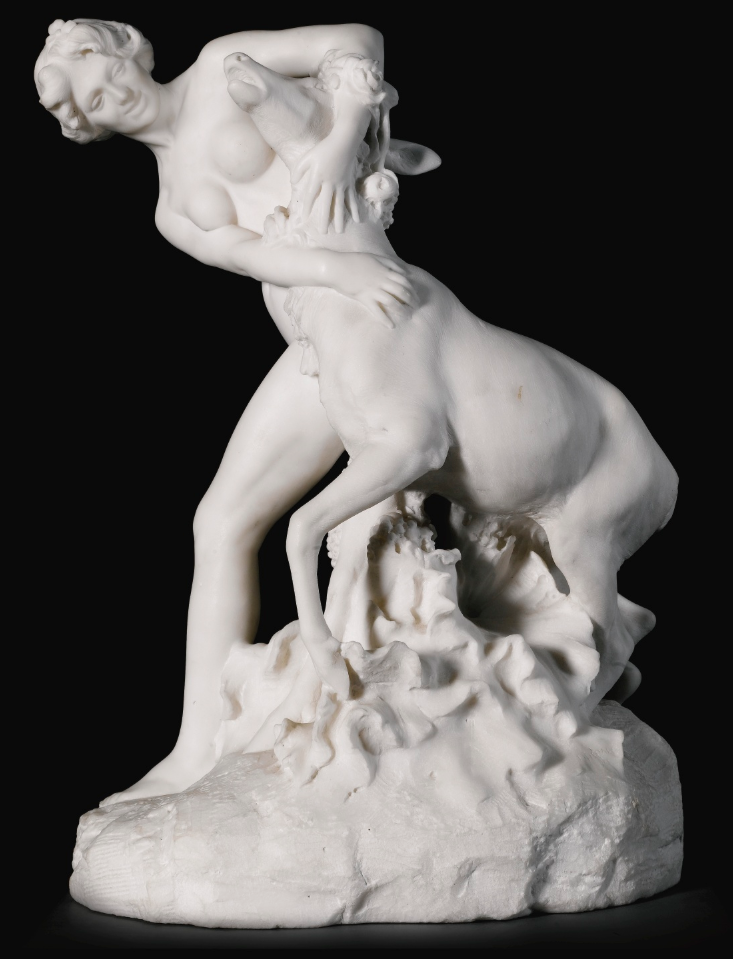

White marble sculpture representing the nymph Diana petting an animal.
One of the most represented deities in 19th century sculpture, Diana is variously depicted with a crescent moon on the forehead, holding a bow and quiver or accompanied by an animal. The choice of attributes depends on Diana’s portrayal by the artist – as the goddess of domestic animals, as the bold huntress or as the lunar goddess.
This white marble sculpture by French sculptor Jules-Louis Rispal (1871 – 1909) is signed and dated « J.RISPAL/1902».
Rispal was born in Gironde, Bordeaux in 1871 and was a student of Émile Thomas (1817 – 1882). Rispal exhibited for the first time at the Paris Salon in 1893 and went on to win an honorable mention in 1899 and another at the World’s Exhibition of 1900. In 1901 he won a third class medal and finally in 1902 a gold medal and a travel scholarship.
He is the author of various monuments such as:
– « Nymph of Diana », a monumental version of the present sculpture found in the « Jardin de la Mairie » of Bordeaux.
– The Art Nouveau Low-Relief which acts as a sundial located in rue Dubois in the second arrondissement of Paris.
Height : 69 cm.
Width: 48 cm.
Depth: 31 cm.
The Eagle Hunter by Jef Lambeaux



The Eagle Hunter by Jef Lambeaux
The bronze sculpture by Jef Lambeaux of a muscular, demi-nude man armed with a bow and arrow is full of energy and dynamism.
Jef Lambeaux’s sculpture of a muscular, demi-nude man armed with a bow and arrow is full of energy and dynamism. Eyes firmly fixed on his quarry; the hunter has just released his next shot; at his feet lies a felled eagle. The sculpture exhibits a beautiful dark brown patina, the sand casting is of high quality.
Jef Lambeaux (1852 – 1908) is undoubtedly the most remarkable sculptor of the second half of the 19th century in Belgium. This man of uncommon energy built an enormous body of work that continues to inspire admiration and wonder. Originality in the broadest sense of the term is the first characteristic of his style. His lifestyle also assured him a unique place in the vibrant Belgian artistic milieu of the time. His solitary empathy, combined with pure singularity and a generous imagination, clearly distinguishes his works from those of his fellow sculptors. With an enthusiasm reminiscent of Rubens, Jordaens and certainly also Antoine Wiertz (1806-1865), Jef Lambeaux unwittingly created countless monumental sculptures that provoked a wide variety of reactions, both aesthetically and ethically.
Firstly, his excellent craftsmanship has never been questioned. Bravery was central in his group scenes which were as dynamic as they were complex. Often larger than life, they included bronze battle scenes, wrestlers, boxers, heavy centaurs and kidnappings. Lambeaux was also well known for his monumental marble sculptures: Le Meurtre (The Murderer, 1905), L’Amour et l’Ivresse (Love and Drunkenness, 1893) and of course his opus magnum, The Temple of Human Passions, a huge white marble bas-relief (8 x 12 metres!) worthy of Rodin, represents an unprecedented dramatic spectrum of human passions. Lambeaux’s work, of which there is not yet a complete inventory, can be estimated at more than 150 works.
Secondly, his energetic lifestyle and successful career gave him access to the crème de la crème of the art world, enabling him not only to create titanic works, but also multiple representations of young women with light feet and expressive busts of men of character, preferably artists (Jacob Jordaens, Henri De Braekeleer, Frans Lamorinière, Hendrik Conscience, etc.). As a result, in Belgian museums – especially those in Brussels and Antwerp – astonishing examples of his work can be seen.
After his studies at the academy and his initial participation in exhibitions, the career of this exceptionally motivated artist only reached cruising speed at the age of thirty, when his now famous sculpture The Kiss was purchased by the Antwerp Museum (1882). Jef Lambeaux was unstoppable in his modelling of sculptures, large and small, commissioned and uncommissioned. All his works bear his trademark originality and high degree of daring. Thus his work and his personality acquired a great reputation, even during his lifetime. One only had to admire the spectacular Brabo Fountain (1887), just opposite the town hall of his home town, to understand his success.
Foundry Luppens H. & Cie :
In the « Almanach du Commerce et de l’Industrie Bruxelles et ses Faubourg » (Trade and Industry Agenda Brussels and its Faubourgs) from 1868 onwards as a publication of the Luppens foundry « Maison fondée en 1850 » (House founded in 1850) with its registered office Rue du Chêne number 20 in Brussels.
The foundry was still located at 20 Rue du Chêne but opened a second establishment at 46-48 Boulevard Central (today called Boulevard Anspach), in 1875.
Then, in 1885 it was located at Boulevard Anspach 46-50 and Rue de Danemark 15 (factory).
In 1887 still at Boulevard Anspach 46-50 and Rue de Danemark 15 and also Avenue du Nord 151 and Rue Neuve 144 – 146 – 148.
After that, in 1891 the title of their advertisement in « Le Patriote illustré » was « H. Luppens & Cie. Gold medal, Paris 1889.
In 1925, the factory located in Rue de Danemark 15 is in the name of the widow Luppens.
Some public monumental achievements:
- 1879: Improvisateur napolitain (Neapolitan improviser) by A. de Tombay, Liège
- 1883: Vase Brunin by C. Brunin, Brussels
- 1886: Bœuf au repos (Ox at rest) by Léon Mignon, Liège
- 1890: Renommée debout (Known Standing) of the funeral monument of Charles Rogier by I. De Rudder, Saint-Josse-Ten-Noode
- 1896: 4 monumental works for the Brussels Botanical Gardens:
– L’Olivier (The Olive Tree) by L. Mignon,
– Le Lys (The Lily) by A. Desenfans,
– Le Héron (The Heron) by F. Cosemans
– Mât décoré du Pigeon (Pigeon pole) by E. Roskam
- 1906: Bust of A. Delcommune, funeral monument of J. Marin, Brussels
Height: 130 cm.
Width: 78 cm.
Depth: 80 cm.

Venus and Cupid by Jean Boucher
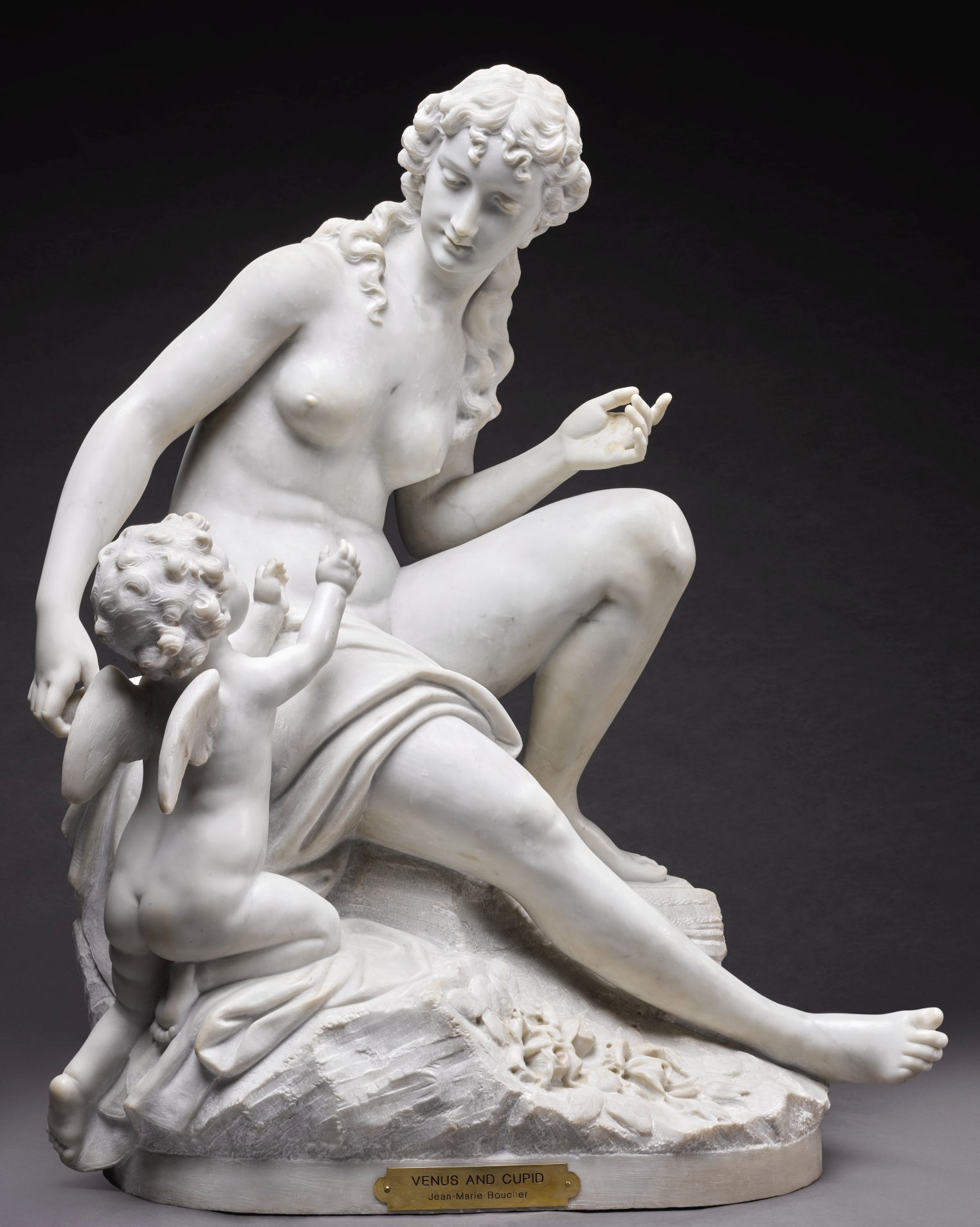

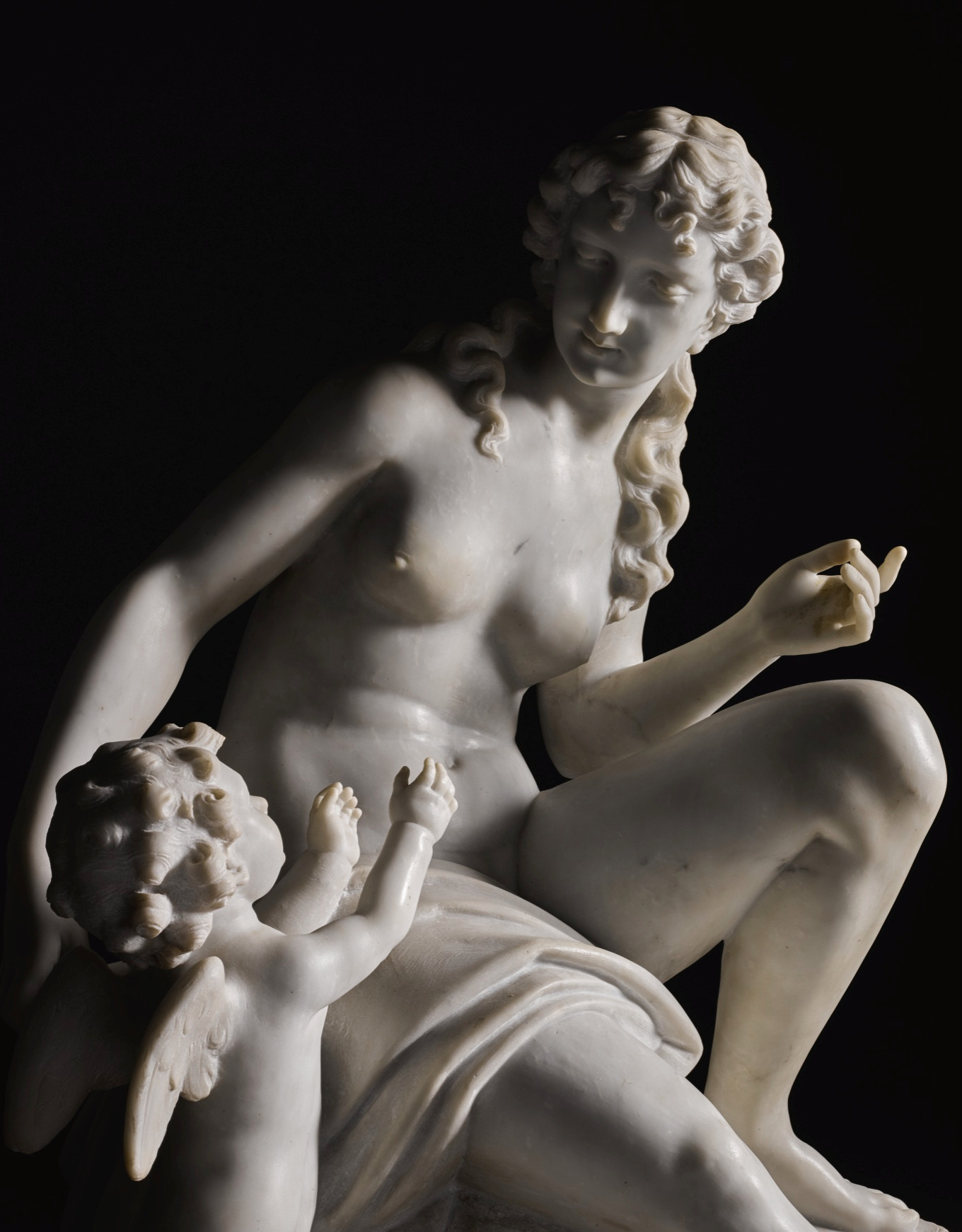

Venus and Cupid by Jean Boucher
This white marble statue of Venus, looking lovingly down at the winged Cupid, was created ca. 1910. The same model in marble was sold by Sotherby’s London in their auction “19th and 20th Century Sculpture » on November 26th in 1996 for £34,500.
This white marble statue of Venus, looking lovingly down at the winged Cupid, was created ca. 1910. The same model in marble was sold by Sotherby’s London in their auction “19th and 20th Century Sculpture » on November 26th in 1996 for £34,500.
Jean Marie Théodore Boucher was a precocious student of Chapu, Falguière and Mercié and is said to have failed to win the coveted Prix de Rome only because his deeply held Romanticism was out of fashion. Nevertheless he won many other honours at exhibitions during the early twentieth century and was made an Officier of the Légion d’honneur in 1914. He also executed many important public commissions, including the impressive « Monument to Victor Hugo » in Guersney in 1908. Two sculptures by Jean Boucher are exhibited in the world famous museum « Quai d’Orsay » in Paris :
- Fra Angelico – Marble sculpture depicting the Renaissance painter : 210 cm high.
- Chinoise au brûle-parfum – Bronze sculpture : 65 cm high.
Archives
Catégories
- Aucune catégorie

